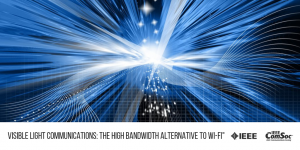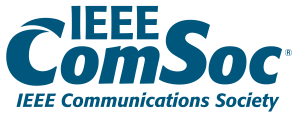Harald Haas to host Online Course With IEEE COMSOC about VLC
Harald Haas will be hosting IEEE COMSOC’s upcoming online web course
VLC – The High Bandwidth Alternative to WiFi

The visible light spectrum is 1000 times larger than the entire radio frequency spectrum of 300 GHz, and this simple fact provides the motivation to use visible light as a high bandwidth alternative to radio. The applications range from gigabit interconnects in data centers, through mobile networking in homes and offices to point-to-point long range wireless backhaul links outdoors. We will set the scene by looking at existing conventional wireless access technology and state clearly its limitations.
Then we will go on to provide a general background to the subject of optical wireless communications, followed by a brief summary of the history of visible light communication VLC). We will discuss the relationship between VLC and LiFi (light fidelity), introducing the major advantages of VLC and LiFi and discuss existing challenges. Recent key advancements in physical layer techniques that led to transmission speeds greater than 10 Gbps will be discussed.
Moving on, we introduce channel modelling techniques, and show how this technology can be used to create fully-fledged cellular networks achieving orders of magnitude improvements of area spectral efficiency compared to current technologies. The challenges that arise from moving from a static point-to-point visible light link to a LiFi network that is capable of serving hundreds of mobile and fixed nodes will be discussed. An overview of recent standardization activities will be provided. Lastly, we will discuss commercialization challenges of this disruptive technology.
Who Should Attend
This advanced-beginner course is intended for a diverse audience including lightwave system researchers and engineers as well as photonic device researchers and engineers and optical sub-system designers. The course should also be of interest to researchers and practitioners in fibre optic communication, wireless communication and lighting systems design. Some basic knowledge in optics and communication theory will be useful but is not a prerequisite. The same applies to basic knowledge of wireless access networks.
Learning Objectives
Understand the limits to conventional WiFi technology and how light can provide massively higher bandwidth.
Describe key visible light technologies such as VLC and LiFi.
Explain practical limitations of VLC communication links
Explain the impact of strong sun light and non-line of sight conditions on data rate performance.
Explain physical layer security in LiFi attocellular networks
Compare different digital modulation techniques used in intensity modulation / direct detection systems in terms of spectrum efficiency and energy efficiency as well as various environmental conditions.
Discuss pros and cons of angular diversity and multiple input multiple output techniques in VLC systems.
Summarise methods to achieve multiuser access and to support mobility in LiFi optical attocell networks.
List practical co-channel interference mitigation techniques in LiFi attocell networks.
Explain how the downlink capacity of optical attocell networks could be obtained taking into account that effects such as fading do not exist unlike in RF.
Discuss how LiFi could lead to a merger of the lighting and wireless communication industries.
Understand commercialization challenges
IEEE COMSOC Course Content
Introduction and motivation (30 min)
History of Visible Light Communication (VLC) (15 min)
What is LiFi and differences to VLC (30 min)
Advantages of LiFi (45 min)
Common misconceptions (30 min)
Channel modeling (15 min)
Digital modulations techniques for LiFi (45 min)
MIMO in LiFi (30 min)
Multi-user access in LiFi (15)LiFi attocellular networks and performance (60 min)
Standardisation (15 min)
Commercialization (30 min)
IEEE ComSoc Training provides the resources and tools you need to advance your career. Our in-depth training courses cover a wide variety of current topics in communications technology and offers the most up-to-date technical content available anywhere.
Choose from courses related to:
5G
Internet of Things (IoT)
Network Function Virtualization (NFV)
Software-Defined Networking (SDN)
Satellite and Positioning
Optical Communications
With IEEE ComSoc Training courses, you earn IEEE Continuing Education Units (CEUs) helping to make sure the knowledge you acquire is recognized and satisfies professional development requirements.
You will appreciate the convenience of our live, online course format that allows for real-time interaction with industry expert instructors. Plus, upon the conclusion of the course you will have access to the course recording to review at your leisure.

